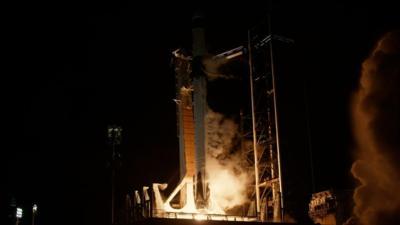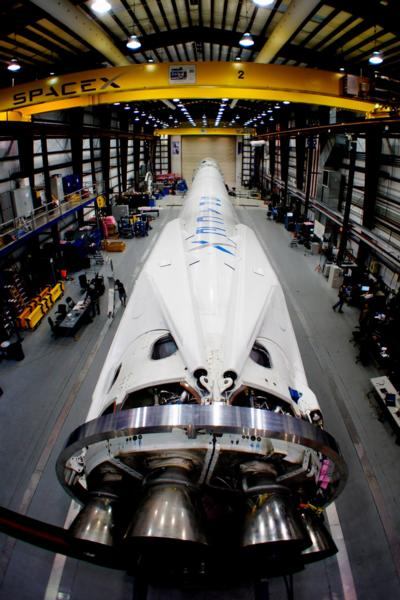Wed, Jul 17, 2024
20 Satellites Left to Burn up in Reentry Thanks to 2nd Stage Leak
The FAA has grounded the SpaceX Falcon 9 fleet after a launch last week inadvertently deployed a handful of Starlink satellites into an unintended, eccentric orbit.

The FAA said it was investigating what happened alongside SpaceX, and that any final report will be approved by the administration. For now, the grounding may end up putting off a handful of other missions, like upcoming Starlink missions scheduled to put more satellites into their orbital internet constellation. The Polaris Dawn mission may end up postponed too, which is on tap to provide a milestone for commercial space exploration once Commander Jared Isaacman leads the first non-governmental EVA mission. That was slated to launch before July 31st under original plans.
SpaceX was quick to speak on exactly what caused the problem, stating that the failed SpaceX 9-3 mission performed admirably aside from a malfunction in the second stage.

The Falcon 9's first stage returned to earth for a successful droneship landing, making for the 329th recovery of an orbital rocket. The second stage suffered a liquid oxygen leak after its first burn. Control decided to raise the orbital height of the stage by relighting the engines, but the "Merlin Vacuum engine experienced an anomaly and was unable to complete its second burn." The second stage survived and deployed its satellites still, but since it failed to hit the proper orbital track, twenty SpaceX satellites were left in an eccentric orbit about half as high up as they'd need to be for continued survival.
After a few attempts to make contact with the satellites (working overnight for the poor SpaceX control room), the "high-drag environment only 135 km above the Earth" got the better of them. Each pass around the globe brought the cluster 5 km closer to Earth, adding additional drag on top of the gravitational pull the satellites suffered at such a low altitude. In the end, SpaceX found that even "maximum available thrust is unlikely to be enough to successfully raise the satellites." That's no big deal for Earthbound space enjoyers, aside from the potential for some pretty lights as the satellites burn up in their descent back to earth.
SpaceX seems pretty optimistic that they'll get right back in the swing of things in no time, giving the impression that they probably have a pretty good idea of what happened and how to prevent it going forward. "SpaceX will perform a full investigation in coordination with the FAA, determine root cause, and make corrective actions to ensure the success of future missions. With a robust satellite and rocket production capability, and a high launch cadence, we’re positioned to rapidly recover and continue our pace as the world’s most active launch services provider."
More News
19-Year-Old Pilot Was Attempting to Fly Solo to All Seven Continents On his journey to become the first pilot to land solo on all seven continents, 19-year-old Ethan Guo has hit a >[...]
From 2017 (YouTube Edition): A Quality LSA For Well Under $100k… Aeroprakt unveiled its new LSA at the Deland Sport Aviation Showcase in November. Dennis Long, U.S. Importer>[...]
Hazardous Weather Information Summary of significant meteorological information (SIGMET/WS), convective significant meteorological information (convective SIGMET/WST), urgent pilot>[...]
Aero Linx: Historic Aircraft Association (HAA) The Historic Aircraft Association (HAA) was founded in 1979 with the aim of furthering the safe flying of historic aircraft in the UK>[...]
"We would like to remember Liam not just for the way he left this world, but for how he lived in it... Liam was fearless, not necessarily because he wasn't afraid but because he re>[...]
 TikToker Arrested After Landing His C182 in Antarctica
TikToker Arrested After Landing His C182 in Antarctica Classic Aero-TV: Versatile AND Practical - The All-Seeing Aeroprakt A-22 LSA
Classic Aero-TV: Versatile AND Practical - The All-Seeing Aeroprakt A-22 LSA ANN's Daily Aero-Term (06.27.25): Hazardous Weather Information
ANN's Daily Aero-Term (06.27.25): Hazardous Weather Information ANN's Daily Aero-Linx (06.27.25)
ANN's Daily Aero-Linx (06.27.25) Aero-News: Quote of the Day (06.27.25)
Aero-News: Quote of the Day (06.27.25)




